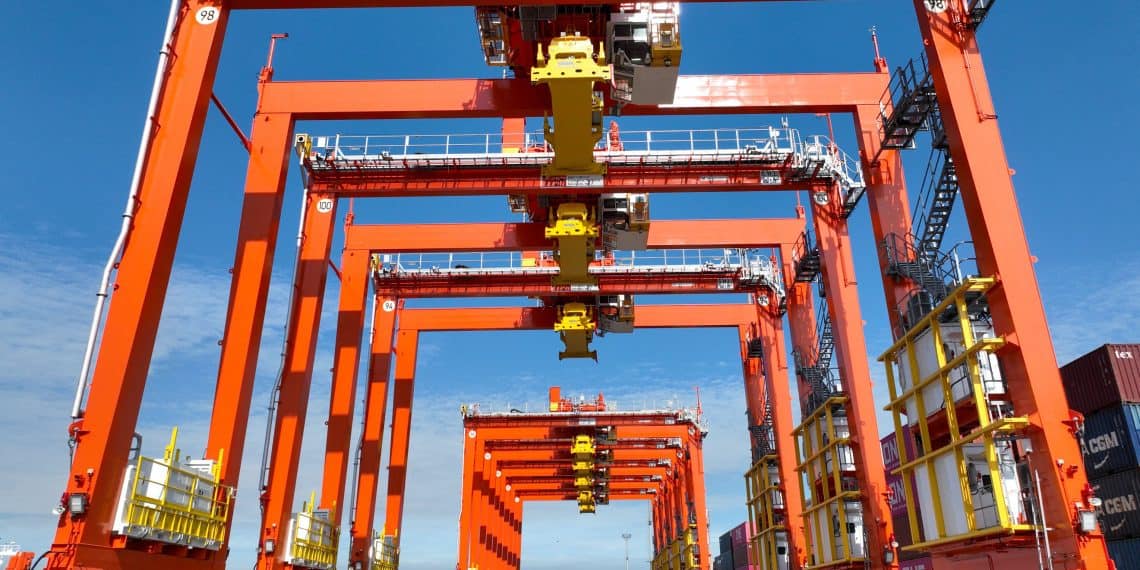The landmark legislation, spearheaded by Senators Mark Kelly (D-AZ) and Todd Young (R-IN), along with Representatives John Garamendi (D-CA-8) and Trent Kelly (R-MS-1), aims to address the stark disparity in maritime capabilities between the United States and China.
Currently, the U.S. maintains just 80 flagged vessels in international commerce, while China operates 5,500 ships. This dramatic imbalance has raised concerns about national security and economic competitiveness, prompting what Senator Kelly, a U.S. Navy veteran and the first U.S. Merchant Marine Academy graduate to serve in Congress, describes as “the most ambitious effort in a generation to revitalize the U.S. shipbuilding and commercial maritime industries.”
The legislation sets an ambitious target of adding 250 ships to the U.S.-flag international fleet within a decade through the Strategic Commercial Fleet Program, backed by cargo preference rules and new regulations to boost competitiveness. This program would develop a fleet of commercially operated, U.S.-flagged, American-crewed, and domestically built merchant vessels capable of competing in international commerce.
To achieve these goals, the Act introduces several key initiatives, including the establishment of a Maritime Security Advisor position within the White House, tasked with leading a national strategy and direct a newMaritime Security Board, and a Maritime Security Trust Fund. The trust fund would reinvest industry-generated duties and fees into maritime security programs and infrastructure.
The legislation also addresses regulatory hurdles by creating a Rulemaking Committee on Commercial Maritime Regulations and Standards to streamline U.S. Coast Guard bureaucracy. Starting in 2030, the Act would “modify duties to make cargo on U.S.-flag vessel’s more competitive, requiring thatgovernment-funded cargomove aboard U.S.-flag vessels, and requiring a portion ofcommercial goods imported from Chinato move aboard U.S.-flag vessels,” according to the lawmakers.
Since firstintroducingtheSHIPS for America Actin December 2024, boosting American shipbuilding has emerged as a bipartisan priority, especially following the USTR’sfindingson China’s shipbuilding dominance and President Trump’ssigningof the shipbuilding executive order earlier this month.
Industry stakeholders have voiced strong support for the initiative. Brian W. Schoeneman, Chair of USA Maritime, called it “the most comprehensive maritime policy initiative in more than half a century,” while Navy League CEO Mike Stevens stressed its importance in today’s “global threat environment, arguably the most perilous since the end of the Cold War.”
The Act includes substantial financial incentives for the shipbuilding sector, including a 25 percent investment tax credit for shipyard investments. It also establishes a U.S. Center for Maritime Innovation to accelerate leadership in next-generation ship design and manufacturing processes.
Workforce development features prominently in the legislation, with provisions for a Maritime Workforce Promotion and Recruitment Campaign and support for maritime education institutions. The Act also addresses infrastructure needs at the U.S. Merchant Marine Academy and modernizes the Coast Guard’s Merchant Mariner Credentialing system.
The legislation’s introduction follows increased attention to maritime security concerns, particularly after recent findings by the U.S. Trade Representative regarding China’s shipbuilding dominance. The bill will be introduced in two pieces in the Senate: the SHIPS for America Act and the Building SHIPS in America Act.
“America has been a maritime nation since our founding, and seapower was a significant contributor to our rise to being the most powerful nation on earth,” said Senator Young, a U.S. Naval Academy graduate.
The Act has garnered support from over 60 maritime organizations and industry stakeholders, reflecting broad consensus on the need to strengthen America’s maritime capabilities.






